Project management (PM) is the process of planning and managing a project to accomplish predetermined objectives. Projects vary, from mounting a launch event to developing new software solutions to anything else teams and businesses want to accomplish. In a nutshell, managing a project involves setting goals, identifying tasks, overseeing the progress, and guiding the team. It’s extremely useful for ensuring optimal team performance and controlling project constraints, risks, resources, and timelines.
Project Management Life Cycle
To better understand what is project management, you must be familiar with its life cycle, and the phases a project goes through from conception to completion. The Project Management Institute (PMI), the leading professional organization for PM, identified five phases in the Project Management Body of Knowledge (PMBOK). Get a comprehensive project management overview by learning the following life cycle phases:
Project management life cycle
Initiation
The initiation phase requires defining the project. It largely involves creating a project charter, a key document that outlines the project’s purpose, scope, stakeholders, and goals. It serves as the blueprint or guide for project success. In a nutshell, these are the project management essentials you must document in the initiation phase:
- Objectives: Identify what the project wants to achieve by laying down SMART goals: specific, measurable, achievable, relevant, and time-bound.
- Resources: Determine resources, such as budget and time constraints.
- Team: Acknowledge who’s part of the team and who does what.
- Stakeholders: Recognize the people who will be affected by the project and their needs.
- Scope: Identify the project’s boundaries, including the constraints that can negatively impact the project, timelines, and deliverables.
Planning
In the initiation phase, you essentially answer the “what” of the project. In this stage, you determine the “how,” outlining all the work that needs to be accomplished to achieve your goal. These are some of the types of plans prepared in the planning phase of project management for small businesses:
- Project plan: Include the project activities, schedule, and constraints. When plotting the schedule, use a Gantt chart, a type of bar chart that outlines tasks plotted against dates.
- Financial plan: Set a project budget and cost estimate with a breakdown of expenses per resource and department.
- Risk plan: Enumerate the possible issues and dependencies that will affect the completion of the project. Create a mitigation plan outlining your team’s actions to prevent or reduce the risks.
- Acceptance plan: Define the deliverables according to the customer’s requirements. It lists the milestones to be achieved and the standards for the customer accepting the output.
Execution
This is the phase where your team puts the plan into action. The most important aspect of execution is creating strategic workflows and maintaining transparent communication with everyone involved in the project to ensure that all stakeholders are aligned.
To streamline this process, maximize software solutions for project management for small businesses. These platforms feature Kanban boards, updates and discussion tools, and workflow automation, enabling you to assign tasks to relevant parties and communicate effectively with team members.
Monitoring
The execution phase happens alongside the monitoring phase. As you execute plans, you oversee the team’s performance and ensure that you’re able to produce deliverables within the given timeline and resources.
The most basic project management software solutions feature Gantt chart and workload views, which help you see if your progress is in line with the predetermined schedule and evaluate if each team member has the right amount of tasks at a given period.
Closing
This phase involves concluding activities, such as handing outputs to the client, terminating contracts, and evaluating the entire project. The assessment involves a meeting among all team members and sharing what they did well and what could have been done better.
The team must also create an impact report that outlines different metrics showing how the project affected stakeholders. The project closeout report lists the project’s achievements and the team’s learnings, which will serve as a reference for future projects.
Types of Project Management
The PM discipline doesn’t follow a one-size-fits-all approach. It largely depends on the type of project you’re working on. Here’s an overview of the different PM types and their respective best use cases:
Top Project Management Software at a Glance
PM software solutions help businesses improve productivity, increase collaboration and accountability among team members, and strategically allocate resources. Most platforms share the same task management features, but some have unique capabilities, making them suitable for specific business needs. Refer to the table below for our top-recommended PM software solutions:
Best Project Management Software | Monthly Starting Price (per User)* | Key Features | Learn More |
|---|---|---|---|
monday.com: Best for Workflow Visualization | |||
$10 |
| ||
ClickUp: Best for Flexible Project Views | |||
$10 |
| ||
Trello: Best for Small Projects | |||
$6 |
| ||
Wrike: Best for Artificial Intelligence (AI) | |||
$10.00 |
| ||
Asana: Best for Third-party Integrations | |||
$13.49 |
| ||
Jira: Best for Software Development | |||
$7.75 |
| ||
Smartsheet: Best for Spreadsheet-based Project Management | |||
$12 |
| ||
Freedcamp: Best for Affordability | |||
$2.49 |
| ||
Basecamp: Best for Team Collaboration | |||
$15 |
| ||
Zoho Projects: Best for Automation | |||
$5 |
| ||
Notion: Best for Content Creation & Collaboration | |||
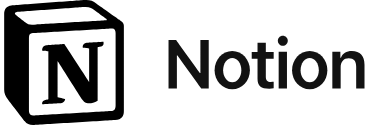 | $8 |
| |
Bitrix24: Best for Sales & Marketing Management | |||
$61 (for five users) |
| or | |
*This accounts for the first available paid tier of each provider. Many of these providers have free basic plans for smaller teams. | |||
Benefits of Using Project Management Software
A PM platform enables managers to improve processes from initiation to closing. It’s especially useful in the execution and monitoring phases, as it offers an excellent overview of all the moving parts of a project. These are some of the specific benefits you’ll get when you use a PM tool:
In the early stages of organizing projects, teams spend significant time identifying activities and plotting them against calendars. With the use of PM software solutions, you’ll be able to do away with these tasks, as the platform features different workflow templates, populated with tasks specific to different industries or business needs. This means you won’t have to build boards from scratch, facilitating easy and simple project management.
At the same time, these platforms have workflow automation tools, helping you manage updates in the project. They will automatically move tasks from one status to another and send notifications to relevant parties whenever there are developments in the workflow. Software solutions cover the basics of project management, so you’re able to focus on the actual work that needs to be accomplished.
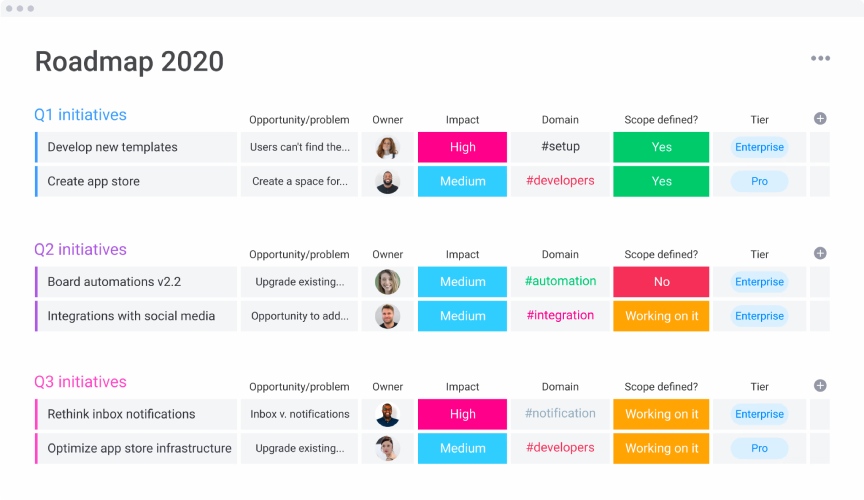
Use monday.com board templates to get started on projects quickly. (Source: monday.com)
monday.com, one of the best PM software solutions in the market, offers over 200 workflow templates, removing the manual work of creating boards. The templates cover various business requirements, including marketing, sales and customer relationship management (CRM), software development, and product management. To learn more about this platform, read our comprehensive monday.com review.
PM solutions make workspaces accessible to team members, with tasks readily visible to responsible parties. Users are able to exchange ideas right within the platform through different built-in collaboration tools, like chat, announcement bulletins, and whiteboards. Some solutions even have proofing and approvals features, expediting the process of sharing feedback and making approvals on different documents.
On top of these, most solutions work with a wide variety of third-party integrations, including video conferencing tools. Without ever leaving the platform, you’ll be able to meet team members in a virtual meeting.
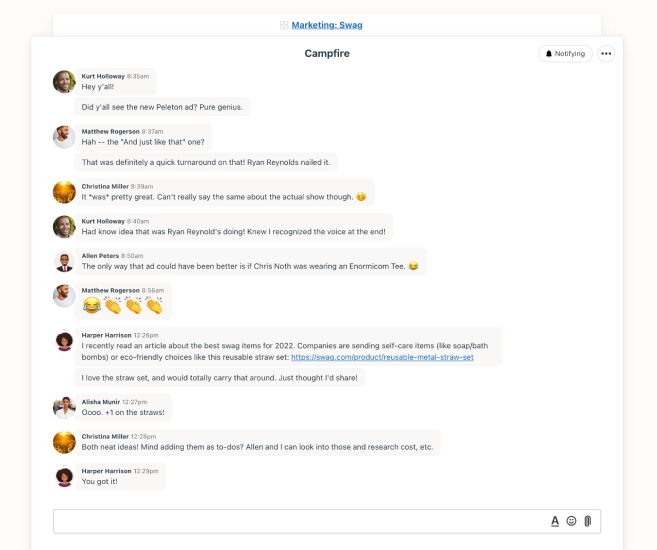
Chat with colleagues via Basecamp’s Campfire feature. (Source: Basecamp)
Basecamp is a great PM solution for team collaboration, as it’s one of the few tools with a built-in chat feature. Campfire lets users send messages in real time, supporting @mentions, file attachments, and emojis. The platform features automatic check-ins, a page where team members share what they’re working on for today or the week. Basecamp also has announcements, enabling managers to broadcast updates and reminders quickly.
With PM software solutions, you’re able to keep all project-related information in one place. Upload relevant documents within task cards for easy reference. Edit documents right within the platform without downloading the files. Different tools offer varying maximum file storage sizes, but some feature unlimited storage. This is especially helpful if you’re dealing with several documents and collaterals for your project.
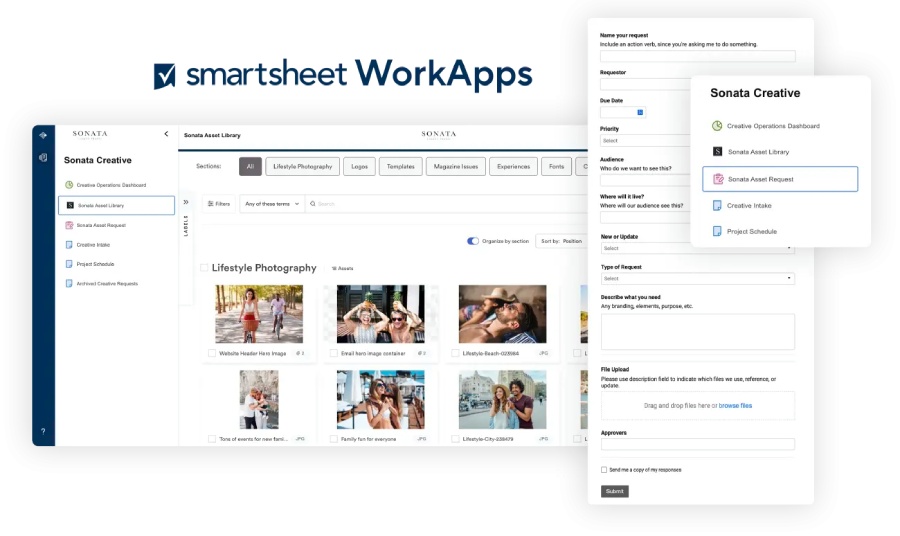
Smartsheet integrates with Brandfolder, allowing users to access all project-related content in one place. (Source: Smartsheet)
PM software Smartsheet integrates with Brandfolder, a digital asset management platform that allows users to refer to a single virtual hub for all project documents. Aside from making relevant files accessible, this integration lets you publish proofed content and attach assets to a workflow sheet, facilitating a seamless workflow. On top of this, Smartsheet offers unlimited file storage in its most expensive subscription plan.
Project success heavily relies on managing people, finances, and tools wisely. When these elements are allocated right, the project is delivered on time and with reduced costs. The benefit of using PM software is that it has built-in resource scheduling and management capabilities, helping you ensure that employees have the right amount of work for a given period and that you stay within the proposed budget.
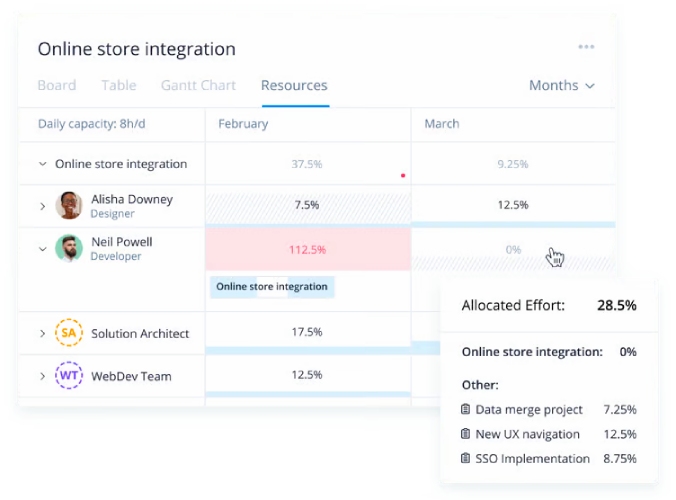
Improve resource planning with Wrike. (Source: Wrike)
Wrike offers resource management capabilities, enabling managers to improve resource planning, forecast staffing demand, and distribute tasks according to employees’ expertise and availability. It has time tracking, offering insights as to how long people work on specific tasks, which in turn helps you set realistic timelines. Use its budgeting tool to create a cost estimate based on team member rates.
With the reporting and analytics tools readily available in PM software solutions, you’ll get meaningful insights about your team’s performance and make adjustments as you progress through the project. The charts display different types of data, including the number of upcoming weekly tasks by assignee, the number of incomplete tasks, and the number of projects by status.
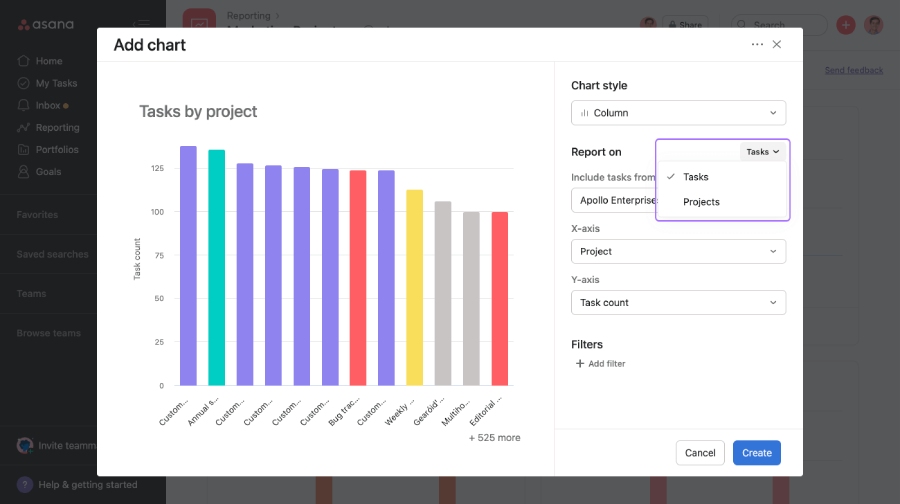
Use Asana’s preset charts to uncover meaningful project insights. (Source: Asana)
Asana has a powerful reporting and analytics tool that enables users to gauge team performance better. Maximize its chart presets to get started quickly on evaluating work progress. The presets include the number of projects by status, this month’s tasks by project, and projects by owner. To make data easily digestible, the platform offers different types of charts: column, line, donut, and burnup.
Key Features of Project Management Software
PM tools offer a wide range of tools designed to promote easy monitoring of task progress and collaboration among team members. Here are some of the common capabilities you’ll find on several platforms:
- Project planning: Project overviews and briefs allow you to define what the project is about and what it aims to achieve.
- Project views: Oversee project activities in various ways: list, Kanban board, timeline, and calendar views.
- Team collaboration: The discussion feature within task cards lets users share ideas and feedback about the assigned to-dos. Meanwhile, the updates section outlines the latest developments in the workflow. Some platforms feature instant messaging and video recording.
- File storage: Upload different kinds of documents and embed them in task cards for easy reference. Storage sizes vary from one provider to another, with some offering unlimited storage.
- Proofing and approvals: Review uploaded files and provide feedback directly on the document. Tag assets that have passed quality standards as approved.
- Reporting and analytics dashboards: Uncover workflow and performance insights from the data gathered by the software solution and adjust your strategies for completing tasks.
- Resource management: Use the resources view and workload charts to see how resources are distributed across different tasks. Adjust workforce scheduling, if necessary.
- Time and budget tracking: Maximize time tracking to learn how much time team members spend on individual tasks. Monitor the budget by keying in the costs for labor and materials involved in the project.
- Third-party integrations: Connect the platform with third-party apps, like instant messaging, video conferencing, and customer relationship management (CRM) tools.
Considerations When Choosing Project Management Software
While PM software solutions are extremely helpful, not all platforms are created equal. For this reason, it’s important to know what to consider when choosing a tool for your project. Here are the most important factors to take into account when looking for a platform:
- Pricing: The best solution is the one that fits within your budget. The majority of vendors follow a per-user pricing scheme, while others have flat-rate pricing. Some offer discounts for annual billing. Take these into consideration when comparing different subscription rates from various providers.
- Features: Your choice of solution must align with the type of project you have and accommodate your business’ pain points. For example, if you struggle to provide updates to stakeholders, it’s wise to choose a platform with built-in chats or announcement bulletins. Maximize the vendors’ free plans or free trials to determine if the solution accommodates your needs.
- Ease of use: The ideal platform is easy to navigate, even for those who are new to the PM software. It must have little to no learning curve, so users won’t have to spend a significant amount of time being familiar with it and lose precious time for actual work.
- Reliability: Some PM solutions offer an uptime guarantee. Check the service level agreement (SLA) to ensure you’ll have fewer incidents of downtime.
- Security: Learn how the platform handles data and keeps your information safe. At a minimum, it must encrypt data both in-transit and at-rest. Check the provider’s data security certifications.
Project Management Best Practices
As you use excellent software solutions to oversee project activities efficiently, apply project management best practices. The following tactics are effective in keeping projects in check:
Start every project right by developing the project charter, a document that provides the overview of the project. It’s easier to qualify activities, identify resources, and define success metrics when you have a clear understanding of what the project is all about. In the project brief, you must document the following: name and description of the project, client, objectives, scope, deliverables, key performance indicators, budget, and timeline.
Projects often get delayed or deviate from their purpose because of misaligned expectations, missing updates, and overlooked notes for improvement. This is why, from the start and throughout the project, you must strive for effective communication, following these simple habits:
- Conduct regular meetings and document the discussion
- Keep all discussions in one platform
- Provide clear instructions about tasks
- Set up a simple review and approval process
- Resolve conflicts and issues right away
Identify all the risks involved in the project to create a more strategic contingency plan. Risks can be in the form of exceeding the planned budget, team members’ productivity tanking, or the management introducing new processes you must be familiar with. To reduce the negative impact of these risks, you must plan for appropriate responses for each of them.
Monitoring is critical to ensure your project is on track to finish on time and within the planned budget. When you regularly evaluate progress, you’ll be able to spot bottlenecks and misallocated resources quickly and adjust processes to keep your project in line. Identify high- and low-performing team members and strategize how to improve morale and productivity.
When you’re busy with a lot of things, the tedious work of keeping documents updated tends to be put on the back burner. However, this will backfire on you at the closing phase when you need to submit all documentation.
You’ll be overwhelmed with so many papers to arrange and developments and changes to remember before handing off the project to the client. That said, as you progress through the project, update your documents, especially the project schedule, expenses, change requests, and issues log.
Frequently Asked Questions (FAQs)
According to a 2023 report by Zion Market Research, the most dominant PM software solutions globally are Asana, monday.com, Smartsheet, Trello, and Wrike.
CRM solutions help businesses manage interactions with customers and potential customers. PM software enables teams to monitor project activities along with the associated budgets and timelines.
ISO 21500:2012 is the international standard for PM, offering an overview of the concepts and processes essential to handling projects effectively. The guidelines apply to any type of organization, including public, private, or community.
Bottom Line
The PM life cycle goes through five phases: initiation, planning, execution, monitoring, and closing. Since projects vary in requirements, project managers use different approaches to handling projects, from Kanban and Agile to the traditional waterfall.
With the use of software solutions and project management best practices, teams reap various benefits, including a more effective project plan and accurate schedule, better team collaboration, and strategic resource allocation. Sign up for the forever-free versions of different platforms and see which suits your business requirements.